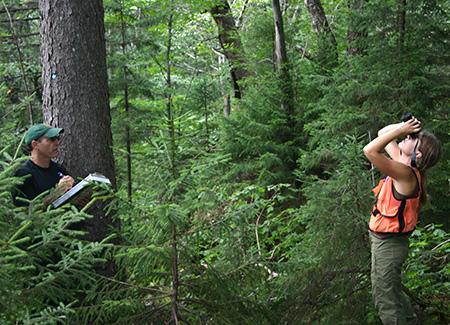Examining the Possible Causes and Implications of the Surprising Growth Resurgence of Red Spruce in the Northern Forest

Acidic sulfur and nitrogen deposition depletes cations such as calcium from forest soils and has been linked to red spruce’s reduced capacity to respond to environmental stress, increases in foliar winter injury, and growth declines in the northeastern United States. Recent tree-ring-based evidence identified a surprising reversal of decades of red spruce growth decline. NSRC researchers collected stem increment cores from dominant or co-dominant red spruce trees at 40 sites in Vermont, New Hampshire, and Massachusetts at low, mid, and high elevations. Researchers processed tree-ring width chronologies using dendrochronological techniques and explored relationships among standardized tree-ring time series, climate, atmospheric carbon dioxide, and pollutants.
Across all sites, recent (2001-2012) red spruce radial growth has been synchronous and above the long-term average (since 1925). Modeled sulfur and nitrogen critical load exceedance helped to account for red spruce growth decline (1950-2010) and rebound from winter injury (2003), particularly at mid-elevation. Increased growth was also related to higher temperatures outside the growing season (fall, winter, spring). Nitrogen deposition was related to lower growth, but strength of this relationship is declining in recent years. Findings indicate increases in red spruce growth timed with decreases in acid deposition and increases in favorable climate conditions may result in greater carbon capture.
These methods can help forest managers and policy makers project growth of future sensitive tree species under historic and future levels of pollutant deposition. This work demonstrates importance of scientific inquiry to identify ecological problems (acid deposition-induced decline), policy decisions to mitigate those issues (the Clean Air Act and amendments), and evidence of resultant biological recovery.
